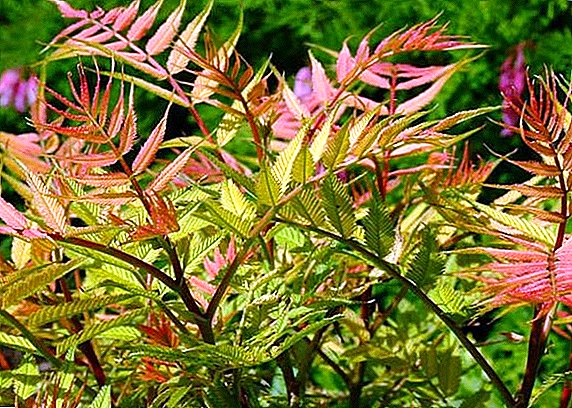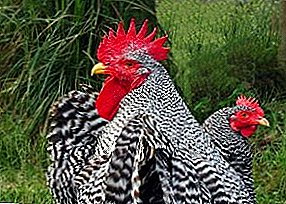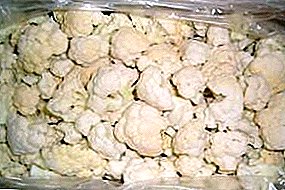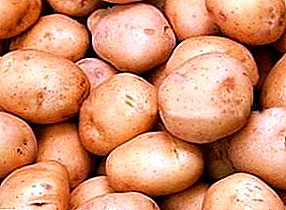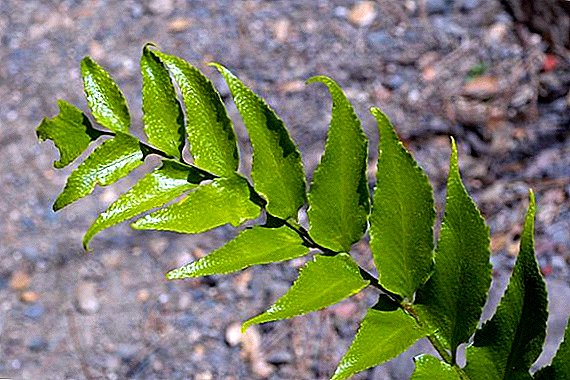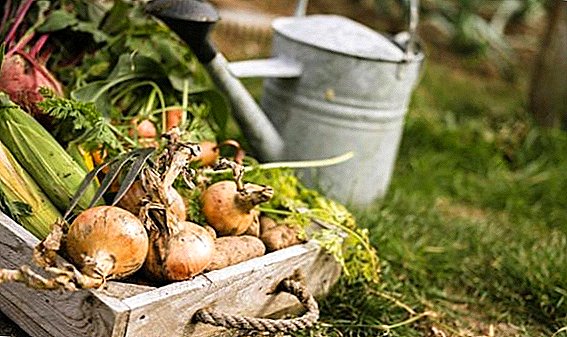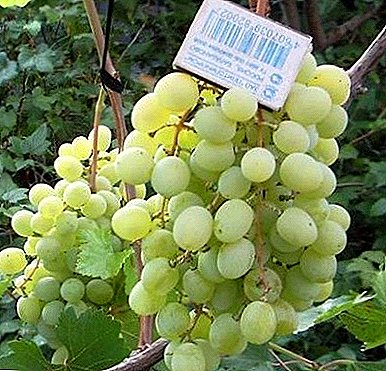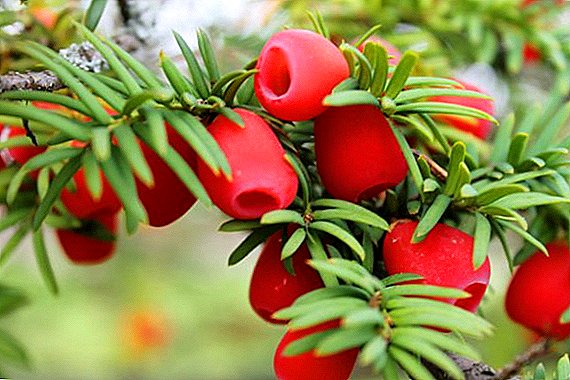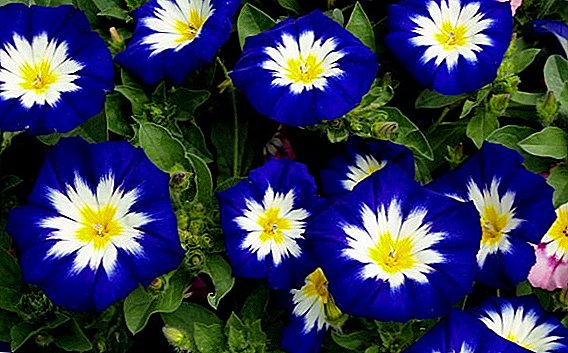 Ipomoea is a class of flowering plants, which is the largest representative of the class of the Vyunkov family.
Ipomoea is a class of flowering plants, which is the largest representative of the class of the Vyunkov family.
Did you know? The name comes from the Greek ips - "worm" and homios - "like". The name of the flower appeared because of the strongly twisting stem that twists like a worm..
Proper landing of the Ipomoea
 Ipomoea reproduction occurs with the help of cuttings or seeds. Planting plants requires compliance with the rules. Ipomoea seedlings, for example, should initially grow in a greenhouse or other warm room. After the ipomoea has blossomed, it needs to be transplanted into the ground.
Ipomoea reproduction occurs with the help of cuttings or seeds. Planting plants requires compliance with the rules. Ipomoea seedlings, for example, should initially grow in a greenhouse or other warm room. After the ipomoea has blossomed, it needs to be transplanted into the ground.
It is necessary to sow ipomoea on seedlings in March, as its seeds germinate quickly. Before sowing, they must be soaked in a solution of "Kornevina" or "Heteroauxin", this will accelerate their growth. Thanks to this procedure, the seeds will soon give rise to shoots that will grow faster.
Since the ipomoea seeds are large, they can be planted 2-3 pieces in a container with a substrate. The soil should be crumbly, nutritious and uniform. From the quality of the soil directly depends on the growth and bloom of the Ipomoea.
After sowing, the plant must be well watered with warm water. It is impossible to prevent overmoistening, it will destroy the plant. After a week you will notice the first shoots. Put the containers on the illuminated place with a temperature of + 18-23 ºС.
Ipomoea grown seedlings transplanted in early summer. By that time, the soil is already warm enough, and the flower will not be threatened by night frosts, which are detrimental to the young plant.
 When it comes time to plant Ipomoea in open ground, the young shoots are transplanted by transfer. Usually for transplanting shoots are ready in two weeks. The distance between the shoots should be about 20 cm apart. After transplantation for them it is necessary to establish a support in the form of a stretched fishing line or lattice of rods.
When it comes time to plant Ipomoea in open ground, the young shoots are transplanted by transfer. Usually for transplanting shoots are ready in two weeks. The distance between the shoots should be about 20 cm apart. After transplantation for them it is necessary to establish a support in the form of a stretched fishing line or lattice of rods.
To skip the process of growing seedlings, ipomeyu can be sown directly into the ground. To do this, soak the seeds for a day in warm water or a solution of "Heteroauxin" and land in the ground at the end of May, having dug them 1 cm.
The site should be sunny and sheltered from the winds. During the week you will see the first shoots. After this, the shoots will start to grow very quickly, so you need to immediately establish support for them.
Plant care during flowering
Ipomee, like any other plant, needs constant care. During the flowering period, this flower is especially in need of supervision.
Watering and loosening the soil
 The soil under the seedlings need to constantly moisturize. These flowers do not tolerate drought, but do not tolerate stagnant water in the soil. Due to the frequent overmoistening of the soil, the Ipomoean roots rot, resulting in the flower dying.
The soil under the seedlings need to constantly moisturize. These flowers do not tolerate drought, but do not tolerate stagnant water in the soil. Due to the frequent overmoistening of the soil, the Ipomoean roots rot, resulting in the flower dying.
An adult plant must be watered constantly throughout the summer so that the flower does not dry out. Starting in September, watering is required only after the soil dries.
Soil where the flower grows, you need to often loosen. This is done so that the roots get oxygen and nutrients from the fertilizer that you feed the flower with. For loosening, dig the soil several centimeters deep.
Fertilizer and ipomoea feeding
Feeding ipomoea should be carried out during the period of active growth of the plant every 3 weeks. As a top dressing it is better to use special fertilizers for cacti or ornamental flowering plants.
It is important to understand that a large amount of fertilizers, especially those containing nitrogen, will lead to the active formation of foliage, but such a flower will not bloom.
Therefore, if you have a question, why ipomoea does not bloom, know: perhaps the reason is fertilizer. The optimal dosage is the concentration for indoor plants.
Important! Observe the measure of quantity and concentration of fertilizer..
Pruning
 Ipomoea must remove diseased or damaged shoots. The best time to trim is September.
Ipomoea must remove diseased or damaged shoots. The best time to trim is September.
Removing all the excess from the plant, you prepare it for the period of winter dormancy.
Sometimes pruning is done in the spring, but this procedure is done to replant the bush.
During spring pruning, no more than three shoots should be left on each stem.
Collecting and storing seeds
In August, the seeds begin to ripen on the plant. They get a lot, they ripen well and sometimes give self-seeding. It is better to collect seeds of morning glory by the end of September.
 By this time, all the flowers fade away, and in their place are balls with seeds, which are well warmed by the sun.
By this time, all the flowers fade away, and in their place are balls with seeds, which are well warmed by the sun.
Tear the ball and break it, if the seeds are black, it means they are ripe.
Collect the seeds in a jar and leave in storage until next year in a dark closet. Ipomoea seeds can be stored for a long time and not lose their properties.
Ipomoea combinations with other plants
Morning glory is ideal for changes in landscape design. She will bring a touch of freshness and lightness to your garden. Ipomoea is perfectly combined with other plants that are used for vertical transformation of the territory, for example, wild grapes, hops, ivy or Campsis.
In the fall, the flower goes well with hop cones. Ipomoea will look great in the garden with deciduous trees. Especially this combination is expressive if the ipomoea will sprout among the branches. Just imagine how beautifully its loose flowers will look among the branches of an adult tree.
Using Ipomoea in landscape design
Ipomeyu quite often used in landscape design. The plant serves as a "live shield" from the sun for the veranda or open arbor. This flower looks pretty nice near antique styled lamps.
 You can often see that the ipomoea is planted near the walls of tall buildings and one-story buildings.
You can often see that the ipomoea is planted near the walls of tall buildings and one-story buildings.
Turn on the fantasy, imagine how you could plant the ipomoea to decorate your plot.
Important! Using ipomeyu to design your site, remember that with the first frost the appearance of the plants will change dramatically. Liana has a low frost resistance.
Ipomoea diseases and pests
Ipomoea is subject to the influence of various pests and parasites. Ipomoea pests can kill the plant if not taken.
The flower is susceptible to fungal diseases: anthracnose, white rust, various types of rot - soft, black, root, stem, as well as viral and physiological diseases, such as white edema.
Most often, the plant is prone to fungal diseases of the soil, especially if it is constantly over-humidified. Some fungal diseases can be cured by removing rotted spots and treating the vines with a fungicide.
 However, if you have diagnosed root, soft or stem rot in your plant, remove infected flowers immediately, since these fungi are not amenable to treatment.
However, if you have diagnosed root, soft or stem rot in your plant, remove infected flowers immediately, since these fungi are not amenable to treatment.
It is impossible to cure viral diseases of Ipomoea. Infected plants should be burned as soon as possible to prevent the spread of infection.
White edema is not an infectious disease. It is believed that only those plants grown in an apartment or a greenhouse can get this disease. It occurs because of too frequent watering and high humidity, as well as low temperature.
The symptoms are blisters and bumps on the leaves, which gradually turn brown. If nothing is done, then soon the leaves simply fall off. In order to avoid this ailment, agrotechnical rules for the cultivation of morning glory must be followed.
The most common pests are spider mites and aphids. If you find an aphids on your flower, then treat the plant with soapy water. Spider mite is afraid of cold water.
Just spray the liana with water and the pests will disappear. These methods are effective only if you find pests immediately. If they are already accustomed, then only special drugs, such as Akarin, Karbofos, Fitoverm, or Aktellik, will help to cope with them.
Now you know how to grow ipomoea and how to care for it.



